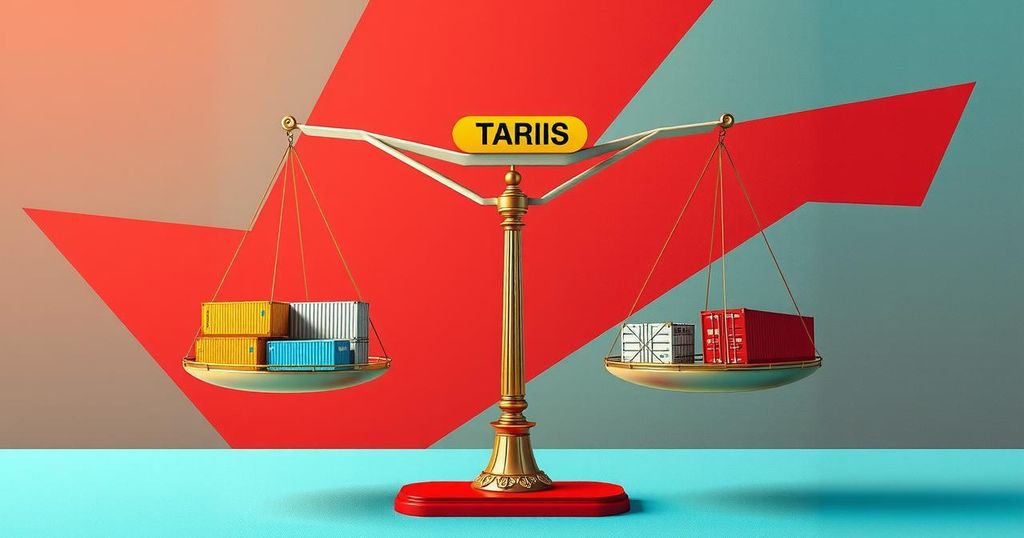Analysis of Donald Trump’s Upcoming Reciprocal Tariffs on April 2, 2023

President Trump plans to implement reciprocal tariffs on April 2, 2023, aimed at matching foreign tariffs on U.S. imports. These measures seek to protect American industries and generate revenue, although economists warn of potential negative impacts on consumers and global businesses. Current trade discussions with India are ongoing, and additional tariffs on oil imports and automobiles are also set to take effect. Possible future tariffs may target various sectors as well, highlighting a robust trade policy shift.
On April 2, 2023, President Donald Trump is set to implement reciprocal tariffs aimed at curtailing reliance on foreign imports. This action, termed as ‘Liberation Day’ by Trump, is designed to impose taxes matching those levied by other countries on U.S. products, effectively raising potential tariffs on numerous goods entering the United States. Although the specifics of these tariffs are expected to be revealed by Trump, White House press secretary Karoline Leavitt indicated that final details will depend on the President’s discretion.
The rationale behind implementing reciprocal tariffs is to defend American industries from unfair competition while also generating revenue for the federal government. However, critics, including economists, warn that disproportionate tariffs could harm consumers through inflated prices and negatively impact global businesses by increasing costs and shrinking sales. Consequently, financial markets are exhibiting signs of unease, compounded by consumer uncertainty surrounding international trade.
While the exact nature of the tariffs remains unclear, they may reflect existing duties and subsidies from other nations. Reports suggest that these tariffs could collectively raise $600 billion, with an average tariff rate of approximately 20 percent. The President has expressed intentions to tax imports particularly from the European Union, India, South Korea, and Brazil. Current discussions have taken place between the U.S. and India concerning a bilateral trade agreement, yet indications of tariff exemptions remain absent.
In addition to the reciprocal tariffs slated for April 2, Trump plans to enforce a 25 percent tariff on imports from countries buying oil or gas from Venezuela. Furthermore, a 25 percent tariff on auto imports is scheduled to take effect soon, coupled with similar taxes on auto parts. The administration estimates that these tariffs could generate around $100 billion in revenue.
Tariffs currently enacted include a 10 percent duty on all Chinese imports, prompting retaliatory measures from Beijing. Earlier tariffs on steel and aluminum products also remain in effect, with several exemptions withdrawn. While Canada has initiated countermeasures, Mexico has not yet introduced formal tariffs, seeking to avoid escalating trade tensions.
Looking ahead, Trump has indicated the possibility of imposing additional tariffs on various sectors, including copper, lumber, pharmaceuticals, and computer chips. He has expressed his intent to refrain from tariff negotiations with foreign nations until after these tariffs are implemented. The European Union has likewise prepared countermeasures targeting U.S. products, totaling approximately 26 billion euros, with phased implementation beginning April 13.
In summary, President Trump’s forthcoming tariffs aim to bolster American industries while potentially leading to increased prices for consumers. The execution of reciprocal tariffs on April 2 signifies a deepening trade strategy that could provoke responses from various nations. While the U.S. seeks to assert its trade interests, the implications of such measures on global commerce and consumer markets remain uncertain, warranting careful observation as events unfold.
Original Source: www.hindustantimes.com






